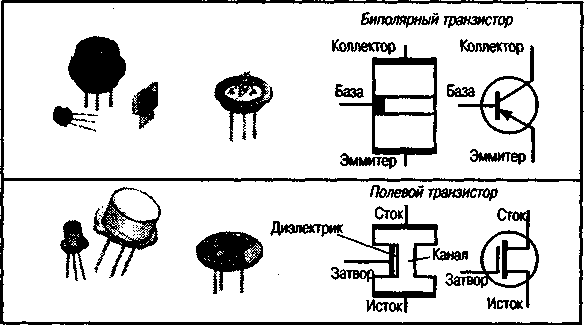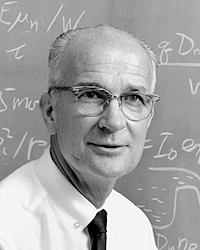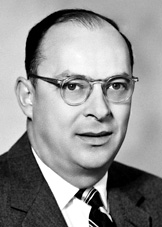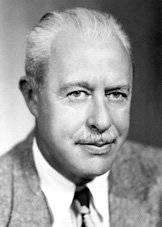
- •Н. Ю. Дениева английский язык
- •Пояснительная записка
- •Content
- •Part I unit 1. Information-dependent society
- •1. Ознакомьтесь с терминами текста 1.
- •2. Прочтите текст и скажите, как вы понимаете термины «информационное общество» и «компьютерная грамотность». Text 1. Computer literacy
- •3. Просмотрите текст еще раз. Ответьте на вопросы, используя информацию текста.
- •4. Вспомните образование и случаи употребления The Past Simple Tense.
- •5. Ознакомьтесь с терминами текста 2.
- •6. Прочтите текст и скажите, что такое компьютер и каковы его основные функции. Text 2. What is a computer?
- •7. Переведите текст. Ответьте на вопросы, используя информацию текста.
- •8. Найдите в тексте английские эквиваленты следующих словосочетаний:
- •9. Составьте пары или группы близких по значению слов из перечня, приведенного ниже.
- •Unit 2. Development of microelectronics
- •1. Ознакомьтесь с терминами текста 1.
- •2. Прочтите текст и скажите, что изучает электроника и какие открытия способствовали ее развитию. Text 1. Development of electronics
- •3. Просмотрите текст еще раз. Ответьте на вопросы, используя информацию текста.
- •4. Догадайтесь о значении следующих интернациональных слов и словосочетаний:
- •5. Найдите в тексте английские эквиваленты следующих словосочетаний:
- •6. Переведите следующие «цепочки существительных». Запомните, что переводить ряд существительных, не связанных предлогами, следует, как правило, с конца.
- •7. Ознакомьтесь с терминами текста 2.
- •8. Прочтите текст 2 и скажите, как вы понимаете термины «микроэлектроника» и «микроминиатюризация». Переведите текст. Text 2. Microelectronics and microminiaturization
- •9. Просмотрите текст еще раз и ответьте на вопросы, используя информацию текста.
- •10. Найдите в тексте английские эквиваленты следующих словосочетаний:
- •11. Переведите следующие слова. Обратите внимание на то, что префиксы dis-, in-, un-, поп-, ir- придают словам отрицательное значение.
- •13. Раскройте скобки и выберите глагол в требуемом залоге: действительном или страдательном.
- •Unit 3. History of computers
- •1. Ознакомьтесь с терминами текста 1.
- •2. Прочтите текст и скажите, о каких первых вычислительных приборах рассказывается в нем. Text 1. The first calculating devices
- •3. Просмотрите текст еще раз. Ответьте на вопросы, используя информацию текста.
- •4. Найдите в тексте английские эквиваленты следующих словосочетаний:
- •5. Вспомните значение следующих глаголов и подберите к ним производные. Например: to calculate — calculating, calculator, calculation.
- •6. Переведите словосочетания, содержащие
- •Ознакомьтесь с терминами текста 2.
- •7. Прочтите текст и скажите, что вы узнали о первых цифровых и аналоговых компьютерах. Переведите текст. Text 2. The first computers
- •8. Просмотрите текст еще раз и ответьте на вопросы, используя информацию текста.
- •9. Найдите в тексте английские эквиваленты следующих словосочетаний:
- •10. Составьте пары близких по значению слов из перечня, представленного ниже.
- •11. Заполните пропуски необходимыми словами.
- •12. Переведите предложения или словосочетания, содержащие:
- •Unit 4. Data processing concepts
- •1. Ознакомьтесь с терминами текста.
- •2. Прочтите текст и скажите, как вы понимаете термины «обработка информации» и «иерархия запоминания информации».
- •3. Просмотрите текст еще раз. Ответьте на вопросы, используя информацию текста.
- •4. Найдите в тексте английские эквиваленты следующих словосочетаний:
- •5. Подберите к терминам, данным в левой колонке, определения, представленные справа.
- •Unit 5. Computer systems
- •1. Ознакомьтесь с терминами текста 1.
- •2. Прочтите текст 1 и скажите, о каких типах компьютеров и сферах их применения вы узнали. Text 1. Computer system architecture
- •3. Просмотрите текст еще раз. Ответьте на вопросы, используя информацию текста.
- •4. Найдите в тексте английские эквиваленты следующих словосочетаний:
- •5. Образуйте (и переведите) имена существительные от приведенных ниже глаголов с помощью суффиксов.
- •6. Переведите предложения, содержащие Participle I и Participle II, в функции обстоятельства.
- •7. Ознакомьтесь с терминами текста 2.
- •8. Прочтите текст 2 и объясните, как вы понимаете термины «аппаратное обеспечение» и «программное обеспечение». Переведите текст. Text 2. Hardware, software, and firmware
- •9. Ответьте на вопросы, используя информацию текста.
- •10. Найдите в тексте английские эквиваленты следующих словосочетаний:
- •11. Вспомните значение новых слов и попытайтесь перевести словосочетания, употребляемые с этими словами.
- •12. Прочтите текст и выберите правильные ответы на поставленные ниже вопросы к тексту. Text 3. From the history of computer development in russia
- •Unit 6. Functional organization of the computer
- •1. Ознакомьтесь с терминами текста.
- •2. Прочтите текст и назовите основные функциональные блоки компьютера и их назначение. Functional units of digital computers
- •3. Просмотрите текст еще раз. Дайте ответы на вопросы, используя информацию текста.
- •4. Найдите в тексте английские эквиваленты следующих словосочетаний:
- •5. Разделите приведенные ниже слова на три группы, определяя по суффиксу часть речи — существительное, прилагательное или наречие. Переведите слова.
- •6. Вспомните значение новых слов и попытайтесь перевести словосочетания, употребляемые с этими словами.
- •7. Вспомните значение следующих прилагательных и преобразуйте их в сравнительную и превосходную степени.
- •Unit 7. Storage
- •1. Ознакомьтесь с терминами текста 1.
- •2. Прочтите текст 1 и скажите, что представляет собой запоминающее устройство в компьютере и о каких его типах вы узнали из текста. Text 1. Storage units
- •3. Найдите в тексте английские эквиваленты следующих словосочетаний:
- •4. Вспомните значение новых слов и попытайтесь перевести словосочетания, употребляемые с этими словами.
- •5. Найдите в тексте слова, близкие по значению следующим.
- •6. Переведите предложения, содержащие Perfect Participle Active и Perfect Participle Passive.
- •7. Ознакомьтесь с терминами текста 2.
- •8. Прочтите текст 2 и скажите, как вы понимаете термин «запоминающая среда» и какие компоненты ее составляют. Переведите текст. Text 2. Storage devices
- •9. Ответьте на вопросы, используя информацию текста.
- •10. Найдите в тексте английские эквиваленты следующих словосочетаний:
- •11. Переведите предложения, содержащие всевозможные формы причастий: Participle I, Participle II, Perfect Participle Active и Perfect Participle Passive
- •Unit 8. Central processing unit
- •1. Ознакомьтесь с терминами текста 1.
- •2. Прочтите текст 1 и скажите, какой компонент составляет сердце компьютерной системы и в чем заключается его функция. Text 1. Central processing unit
- •3. Просмотрите текст еще раз. Ответьте на вопросы, используя информацию текста.
- •4. Найдите в тексте английские эквиваленты следующих словосочетаний:
- •5. Вспомните значение новых слов и попытайтесь перевести словосочетания, употребляемые с этими словами.
- •6. Переведите предложения, содержащие независимый причастный оборот.
- •7. Ознакомьтесь с терминами текста 2.
- •8. Прочтите текст 2 и скажите, о каких компонентах центрального процессора и их назначении вы узнали. Переведите текст. Text 2. The cpu main components
- •9. Найдите в тексте английские эквиваленты следующих словосочетаний:
- •10. Вспомните значение новых слов и попытайтесь перевести словосочетания, употребляемые с этими словами.
- •11. Сравните и проанализируйте предложения, содержащие зависимый и независимый причастные обороты. Переведите их.
- •Unit 9. Input-output units
- •1. Ознакомьтесь с терминами текста 1.
- •2. Прочтите текст и скажите, какие устройства относятся к сфере ввода-вывода информации.
- •Input Device Text 1. Input-output environment
- •3. Найдите в тексте английские эквиваленты следующих словосочетаний.
- •4. Вспомните формы инфинитива, проанализируйте и переведите следующие предложения.
- •5. Ознакомьтесь с терминами текста 2.
- •6. Прочтите текст 2 и назовите приборы, которые служат для введения информации в компьютер. Переведите текст. Text 2. Input devices
- •7. Ответьте на вопросы, используя информацию текста.
- •8. Найдите в тексте английские эквиваленты следующих словосочетаний:
- •9. Вспомните значение новых глаголов и переведите слова, производные от них.
- •11. Ознакомьтесь с терминами текста 3.
- •12. Прочтите текст 3 и назовите типы принтеров и их назначение. Text 3. Printers
- •13. Ответьте на вопросы, используя информацию текста.
- •14. Найдите в тексте английские эквиваленты следующих словосочетаний:
- •15. Прочитайте и переведите текст. Text 4. Scanners
- •Unit 10. Personal computers
- •1. Ознакомьтесь с новыми словами и терминами текста 1.
- •2. Прочтите текст 1 и скажите, существуют ли отличия персональных компьютеров от больших компьютеров и в чем они заключаются. Text 1. Personal computers
- •3. Ответьте на вопросы, используя информацию текста.
- •4. Найдите в тексте английские эквиваленты следующих словосочетаний:
- •5. Проведите грамматический анализ текста, найдите в нем инфинитивные и причастные конструкции. Переведите предложения.
- •6. Ознакомьтесь с терминами текста 2.
- •7. Прочтите текст 2 и укажите сферы деятельности, где используются персональные компьютеры. Text 2. Application of personal computers
- •8. Ответьте на вопросы, используя информацию текста.
- •9. Найдите в тексте английские эквиваленты следующих словосочетаний:
- •10. Найдите в текстах “Personal Computers” и “Application of Personal Computers” слова
- •11. Расшифруйте следующие аббревиатуры и переведите их
- •12. Переведите безличные предложения. Обратите внимание на их специфику.
- •13. Прочитайте и переведите текст. Text 3. A modem
- •Unit 11. Computer programming
- •1. Ознакомьтесь с терминами текста 1.
- •2. Прочтите текст 1 и объясните, как вы понимаете термин «компьютерное программирование». Text 1. Computer programming
- •3. Просмотрите текст еще раз и ответьте на вопросы, используя информацию текста.
- •4. Найдите в тексте английские эквиваленты следующих словосочетаний:
- •5. Подберите из предложенных ниже русских словосочетаний значения следующих терминов на английском языке.
- •6. Ознакомьтесь с терминами текста 2.
- •7. Прочтите текст 2 и объясните, что представляют собой языки программирования. Text 2. Programming languages
- •8. Просмотрите текст еще раз и ответьте на вопросы, используя информацию текста.
- •9. Найдите в тексте английские эквиваленты следующих словосочетаний:
- •Задания для самостоятельной работы
- •Application of computers
- •Some first computer models
- •1. Babbage's Analytical Engine
- •2. The Mark I Computer (1937—1944)
- •1. The eniac (1943-1946)
- •2. The edvac (1946-1952)
- •3. The univac I (1951)
- •Steps in the developing of computers
- •1. Logical circuit elements
- •2. The definition of mechanical brain
- •Digital computer operation
- •3. Memory
- •Выполните письменный перевод текстов по вариантам.
- •Microprocessor - a brain то the hardware
- •Microprocessor - a brain то the hardware
- •Keyboard devices
- •Magnetic media devices
- •Keyboard devices
- •1. Microcomputer system organization
- •2. Microcomputer system organization
- •1. Rpg II Programming language
- •2. Basic
- •3. Pascal
- •Grammar references Unit 1
- •1. Причастия
- •2. Инфинитив
- •2.1 Объектный инфинитивный оборот (сложное дополнение)
- •1) Если сравнивают два одинаковых предмета
- •2) Если сравнивают два неодинаковых предмета
- •3) Если прилагательное стоит в превосходной степени
- •Список неправильных глаголов
- •Список прилагательных
- •Literature
2. Прочтите текст и скажите, что изучает электроника и какие открытия способствовали ее развитию. Text 1. Development of electronics
Electronics is a field of engineering and applied physics dealing with the design and application of electronic circuits. The operation of circuits depends on the flow of electrons for generation, transmission, reception and storage of information.
Today it is difficult to imagine our life without electronics. It surrounds us everywhere. Electronic devices are widely used in scientific research and industrial designing, they control the work of plants and power stations, calculate the trajectories of space-ships and help the people discover new phenomena of nature. Automatization of production processes and studies on living organisms became possible due to electronics.
Fig. 1. Schemes of bipolar and field-effect transistors

The invention of vacuum tubes at the beginning of the 20th century was the starting point of the rapid growth of modern electronics. Vacuum tubes assisted in manipulation of signals. The development of a large variety of tubes designed for specialized functions made possible the progress in radio communication technology before the World War II and in the creation of early computers during and shortly after the war.
The transistor invented by American scientists W. Shockly, J. Bardeen and W. Brattain in 1948 completely replaced the vacuum tube. The transistor, a small piece of a semiconductor with three electrodes, had great advantages over the best vacuum tubes. It provided the same functions as the vacuum tube but at reduced weight, cost, power consumption, and with high reliability. With the invention of the transistor all essential circuit functions could be carried out inside solid bodies. The aim of creating electronic circuits with entirely solid-state components had finally been realized. Early transistors could respond at a rate of a few million times a second. This was fast enough to serve in radio circuits, but far below the speed needed for high-speed computers or for microwave communication systems.
-

William Bradford
Shockley

John Bardeen

Walter Houser
Brattain
The progress in semiconductor technology led to the development of the integrated circuit (IС), which was discovered due to the efforts of John Kilby in 1958. There appeared a new field of science — integrated electronics. The essence of it is batch processing. Instead of making, testing and assembling discrete components on a chip one at a time, large groupings of these components together with their interconnections were made all at a time. ICs greatly reduced the size of devices, lowered manufacturing costs and at the same time they provided high speed and increased reliability.
3. Просмотрите текст еще раз. Ответьте на вопросы, используя информацию текста.
1. What is electronics? 2. Can you imagine modern life without electronics? 3. Where are electronic devices used? 4. What was the beginning of electronics development? 5. What made the progress in radio communication technology possible? 6. What is the transistor? 7. When was the transistor invented?
-
What aim was realized with the invention of the transistor?
-
When were integrated circuits discovered? 10. What advantages did the transistors have over the vacuum tubes?
